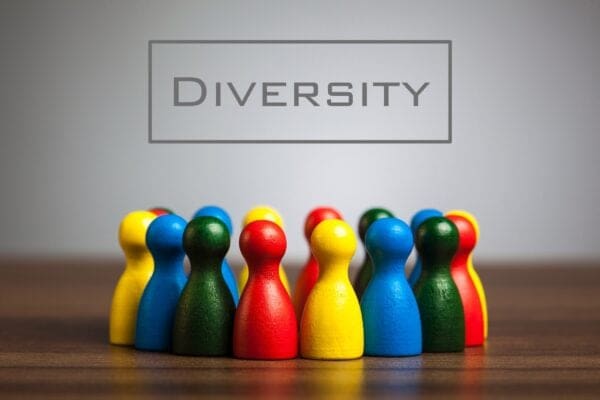The Definitive Guide to Employee Onboarding for HR and Business Leaders
Here, you’ll learn all about onboarding, specifically:
- What it is and why it matters.
- How to onboard new employees.
- How it has changed with the pandemic.
I’ll also cover some tips for you to conquer the virtual onboarding process. Let’s start.

What is Onboarding?
In the field of HR, onboarding refers to the process of integrating a newly hired person seamlessly into the company. It is how an employee becomes familiar with the job role, daily tasks, and the overall work culture.
The process starts from hiring your new employee until they get settled in their role. Here are some of the onboarding activities included in most onboarding processes:
- Job offers and salary negotiations.
- Administrative paperwork.
- Provision of the required tools and technology.
- Culture orientation.
- Job training.
- Employee handbook training.
- Benefits education.
- Office tours.
- Team introductions.
Thus, onboarding includes everything new employees need to become contributing members of the company.
What Onboarding is NOT
Employee onboarding is commonly associated with an orientation meeting. These terms, onboarding, and orientation are often used interchangeably. But employee onboarding is not simply employee orientation. Nor is it just a check-box activity to learn the basics from the employee handbook or complete paperwork.

The orientation process usually happens in the first few weeks of hiring an employee. They receive a formal introduction to the company. Leaders give presentations, hold Q&A sessions, and bring the company culture to life.
Thus, the process of orientation, administrative paperwork, etc., falls under an employee onboarding program. But onboarding in itself is much more than the sum of its parts.
Onboarding is an ongoing and continuous process that may last anywhere from a few weeks to a year. It consists of the in-depth process of ingraining your employees to your company’s expectations, skills, knowledge, and culture. Ideally, employees feel confident and competent at the onboarding process, and ultimately, it defines your employee’s experience and long-term potential.
Why is Onboarding Important?
The world of work is going through a dynamic transformation. There’s a war for talent, and companies are competing to attract and retain the best people. Businesses might believe that a good salary or incentives are enough to attract top talents. But it isn’t just about giving out a handsome paycheck. It is about the employee experience, i.e., how companies shape the way people work.
This is where a strategic employee onboarding process comes into play. It is crucial to make your new employees feel motivated to navigate their new roles. You can even consider it a strategic approach because handling the first few days of an employee’s experience is crucial to ensuring high employee retention.
Thus, companies with a solid onboarding experience are likely to see:
- Less employee turnover.
- Higher employee engagement.
- Reduced costs due to less turnover.
- Better employee experience.
- Better assimilation into the work culture.
- Proper understanding of role and expectations.
A successful employee onboarding process costs money. But it can have a positive impact on your business’s bottom line. The better your onboarding process, the faster your employees get up to speed to generate revenue.
Sticky Learning ® is 7 times more effective than 1-day training courses. Plus, you will get a Chain of Evidence proving your Return on Investment. Discover soft skills training that changes behaviours long term.

What Does Onboarding Mean for a New Employee?

Onboarding helps a new employee acclimate to the organization to ensure a strong and rewarding start. They get the necessary administrative documents, equipment, tools, and resources to carry out their responsibilities. But admin work and paperwork are only part of the onboarding process.
The best onboarding processes include social and cultural integration. Through effective onboarding, an employee:
- Understands their role and responsibilities.
- Settles into their new environment.
- Meets their managers and teammates.
- Learns about company culture, values, systems, and processes.
How Long Does Onboarding Take?

There is no set rule about how long onboarding needs to be. However, it’s important to be thorough in this process if you want to maximize employee engagement and minimize employee turnover.
Employee onboarding may last anywhere from a few weeks to a year. But the most effective onboarding usually lasts at least a few months. This is because relational onboarding takes more time than transactional onboarding. Relational onboarding involves building relationships with peers, building trust, and creating a clear definition of roles and boundaries.
Ideally, employees feel confident and competent at the end of the onboarding process. The end goal of onboarding is that the employees have the resources they need to feel comfortable doing their job as per expectations.
What are the Phases of Onboarding?
Onboarding is the first impression that your new hire gets into the company, and this is where you lay the groundwork for the rest of their employee experience.
By the time onboarding is over, your new employee has an in-depth understanding of how things work in your company. So, optimising the onboarding process is a key strategy to improve your brand image and recruit better candidates.
Let’s have a look at the different onboarding phases to help you draft a clear strategy:
- Pre-boarding.
- Orientation.
- Training.
- Transition.
1. Pre-Boarding
Pre-boarding begins as soon as a candidate accepts your offer and continues until their day of joining. Time management is crucial at this point. The new joinees are uncertain of what lies ahead. So it would help if you avoided miscommunication that can make them doubt their decision to join your company.
Here’s what you can do:
- Help employees complete all the necessary paperwork.
- Give them ample time to finish the exit tasks at their previous organization.
- Support them with relocation if needed.
- Send them an employee onboarding video or a handbook about your work culture so they get a brief idea of what their first day will look like.
2. Orientation
The second onboarding phase is all about welcoming new hires to your company, and it includes providing an orientation to help them acclimate.
It’d be good to restrict the orientation phase to a week at most so that new hires can start work as soon as possible. I’d advise you to keep the first day as simple as possible.
Here’s what you can do:
- Help them gain a better grasp of your company culture.
- Show them how your work practices align with this culture.
- Tell them how to log their hours and use employee scheduling software.
- Share with them your leave, attendance, pay-rolls, and benefits.
- Introduce them to their managers and teammates.
You can organise a quick meeting at the end of the day to ensure your new hires are comfortable and adjusting well.
3. Training

Training is one of the most important phases of onboarding, and it’s directly linked to the employee’s performance and satisfaction levels. Without formal training, your employees may feel lost and not know what it takes to thrive, leading to a high turnover rate.
On the other hand, a well-structured training plan will help employees feel welcome. They will know that you care about their development and are likely to engage more.
Here’s what you can do:
- Introduce your employees to your Learning Management System.
- Provide online learning opportunities.
- Explore different learning techniques like blended learning, self-paced learning, microlearning, etc.
- Store onboarding learning materials safely in an easily accessible place.
4. Transition
The final phase of onboarding is meant to help employees transition from a new hire to a productive and engaged employee.
Here’s what you can do in this phase:
- Encourage your managers to set clear expectations so that the new hires know what they are responsible for.
- Set smart goals to help them visualise your expectations.
- After a month or quarter, you could conduct a performance review to recognise their efforts so far and help them improve their performance.
- Take a step further by investing in their continued career and personal growth. This will ensure that both the individual and organisation can achieve success.
8 Best practices for a Vibrant Onboarding Program

- A mobile, seamless onboarding experience to give new hires a clear understanding of expectations to best prepare. Leverage technology with onboarding platforms for optimised outcomes.
- An authentic welcome from leadership reinforces their decision to join the company. They’ll feel appreciated and valued. It can be in the form of a note or video from the CEO or manager instead of a pre-designed template from HR.
- An enthusiastic welcome from their teams in the form of a team video.
- Respect their time by allowing new employees to fill out forms like background checks before their day of joining.
- Making the first-day count with simplicity and fun. Answer their most probable questions even before they think about asking. Talk about office attires, benefits, fun team-building activities of the past, your corporate fitness programs, etc.
- Being proactive and showing them their place to sit, providing them with equipment like laptops, the right software, etc.
- Assigning an onboarding mentor or buddy to help new employees get acclimated.
- Get the teams involved and introduce an employee of the month program to spark engagement.
- Surprising them with a one-month anniversary celebration. You can do this for virtual teams as well.
Virtual Onboarding Practices
Onboarding is one of the most challenging parts of the hiring process. Add the aspect of remote work; you get a bigger challenge: remote employee onboarding.
Although virtual onboarding practices were on the rise with rising hybrid work trends, the pandemic accelerated its adoption. Thus, the process of onboarding changed out of necessity as people began working from home, and HR had to learn to adapt and exist with numerous changes.
Also, the new employee expectations are higher than ever. Millennials have priorities different from traditional outlooks. They want to do meaningful work. In return, they expect flexibility, paid time off, enhanced experience, and ample scope for development. HR needed to revamp its strategies to meet these new needs.
Let’s have a look at some challenges regarding virtual onboarding:

- Remote workers are away from their team. Virtual team introductions don’t come close to face-to-face interactions in terms of engagement.
- Introducing the company culture in a virtual setting becomes hard. It will be more time-consuming for new hires to get used to how things work.
- There can be issues with different time zones.
So here’s what you can do for a great virtual onboarding experience:
Pre-Boarding
Be organised and finish all the paperwork. Get your new employees the company culture video. Give them the time to transition from their previous jobs. Take help with simple digital tools to get some of the paperwork out of the way. Also, inform their team members and managers about their joining well beforehand.
Make Goals and Expectations Clear
One of the critical elements of effective onboarding is the communication of job expectations. A remote job doesn’t mean fewer expectations. Make sure you communicate the job expectations properly to the new employee. And if there is any relaxation, then share that effectively.
Have an HR onboarding ebook ready, and share a video of previous training and onboarding experience. If you don’t have such materials, think about creating one. It will save a lot of time in the future and make your life a tad bit easier.
Create a Constant Feedback Loop
Remote workers might find it difficult to grasp a product concept or be confused about salary-related information. In that case, create a feedback path for employees working from home. You can create specific employee pulse surveys to inquire about any of their difficulties.
Peer Mentoring
It isn’t easy to make new friends on the job from the get-go. In an office set-up, managers acquaint new employees with the team, which needs to be taken forward in a virtual office management set-up.
Finally, don’t forget to greet your new employee on social media. It will make them feel much more comfortable and welcome.

Final Thoughts
A great onboarding program is urgent, especially now. The pandemic has changed the way we work. But the reality is that hybrid work culture is here to stay, and we are not going back to onboarding the way it used to be, pre-pandemic. That means that your traditional onboarding strategies need to adapt and improve with time.
Onboarding is essential for retention, and today’s workforce won’t accept mediocre programs anymore. They expect a more personalized experience which is also more efficient. So adjust accordingly and make conscious efforts to align your onboarding needs with business goals. Make your new hires feel connected and induce a sense of belonging.




